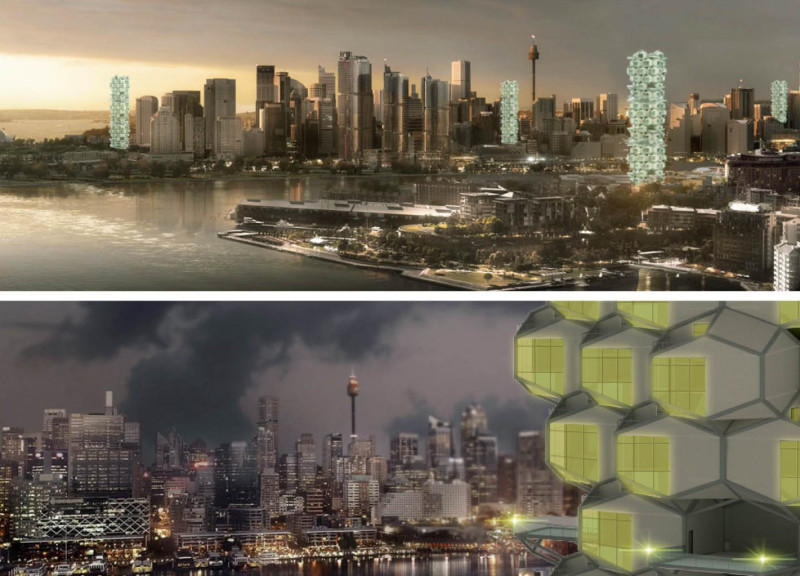5 key facts about this project
This architectural project is a response to the growing demand for livable urban spaces amidst escalating real estate prices. The hexagonal shape minimizes wasted space and promotes density without compromising aesthetic value. The cohesive design integrates residential, communal, and recreational areas, creating a balanced environment conducive to modern urban living.
Modular Design and Spatial Efficiency
The unique modular design of Hexagonal City sets it apart from typical housing projects. Each hexagonal cell can be combined with others to form larger complexes, enabling adaptability for different living arrangements. The use of prefabricated modules facilitates faster on-site construction and reduces waste.
The architectural layout features clearly defined zones within each unit, including living areas, kitchens, bedrooms, and bathrooms. This organization ensures efficient use of space while promoting comfort and functionality. The incorporation of balconies and communal green spaces allows for interaction among residents, fostering a sense of community.
Sustainability and Material Choices
Sustainability is a key focus of the Hexagonal City project. The integration of green roofs not only provides recreational space for residents but also contributes to the overall ecological footprint of the architecture. The selection of materials, such as concrete for durability, glass for natural light, and steel for structural support, reflects a commitment to high-quality and sustainable building practices.
The project also incorporates passive design strategies that enhance energy efficiency. The extensive use of glass façades maximizes natural lighting, reducing the reliance on artificial lighting and HVAC systems. This approach aligns with contemporary architectural ideas aimed at promoting sustainable living conditions.
Explore the architectural plans and designs presented in Hexagonal City for deeper insights into its innovative approach to urban housing. This project represents a significant move towards responsive architecture that meets the pressing needs of Sydney's housing market.


























